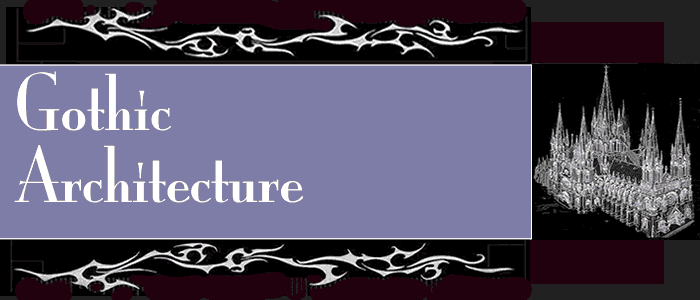|
Perpendicular Gothic
The final stage of gothic architecture in England was the
Perpendicular period that existed between 1380-1525. During this time
gothic architecture changed in a number of ways but the one thing that
really defines this period is the significance of vertical lines. These
strong and distinct lines were incorporated into wall paneling, window
design and fan vaults. The element of vertical line considered on the
exterior of the building because spires and flying buttresses were added
to gothic structures with the purpose of increasing the height of the
building.
Large windows that were found in gothic architecture were further enhanced
during the perpendicular period as designers became more know ledged in
the benefits to using pointed arches and flying buttresses in there buildings.
In a way pointed aches were not only beneficial for support but they contributed
to the beauty of the building as well. The pointed arches gave windows
a more decorative appearance and the flying buttresses reached a remarkable
beauty as crockets and tiny pinnacles were created to add detail to the
structure. During this period windows became more curvilinear and more
windows were added to gothic architecture to further increase the amount
of light within the structure.
Two other factors that contributed to the perpendicular gothic style were
hammerbeam roofs and fan vaults. Fan vaults were seen as a decorative
masterpiece and hammerbeam roofs became a design of great importance.
By using hammerbeam roofs in gothic architecture it allowed more weight
and pressure to be applied to the ceilings. This made it possible to create
spires that were higher and steeper.
The final two aspects that made the perpendicular period different from
the decorated gothic period were that columns were placed closer together
and decorative elements within the structures (such as carvings) became
less natural and more formal. Elements of the gothic architecture changed
between these periods in time but plant life was still the most popular
symbol used in both perpendicular and decorative design.
An example of a building that was created during this period is the Gloucester
(built in the 1400’s) and this structure has the reputation of being
an exceptionally noble building. The Perpendicular period in England was
the longest period of gothic architecture but it has also been stated
that there is no structure that has ever been entirely constructed in
this style.
HOME |





